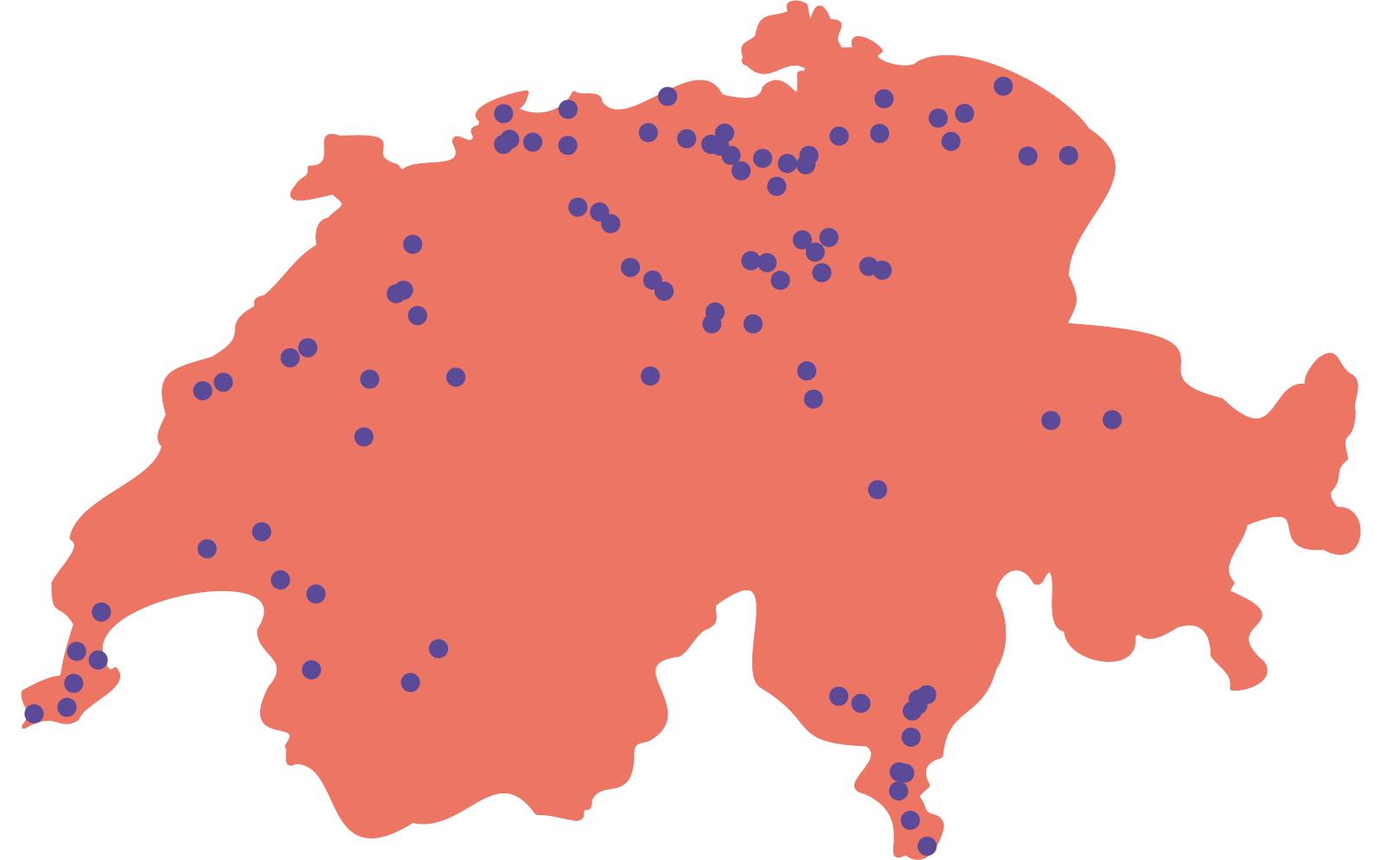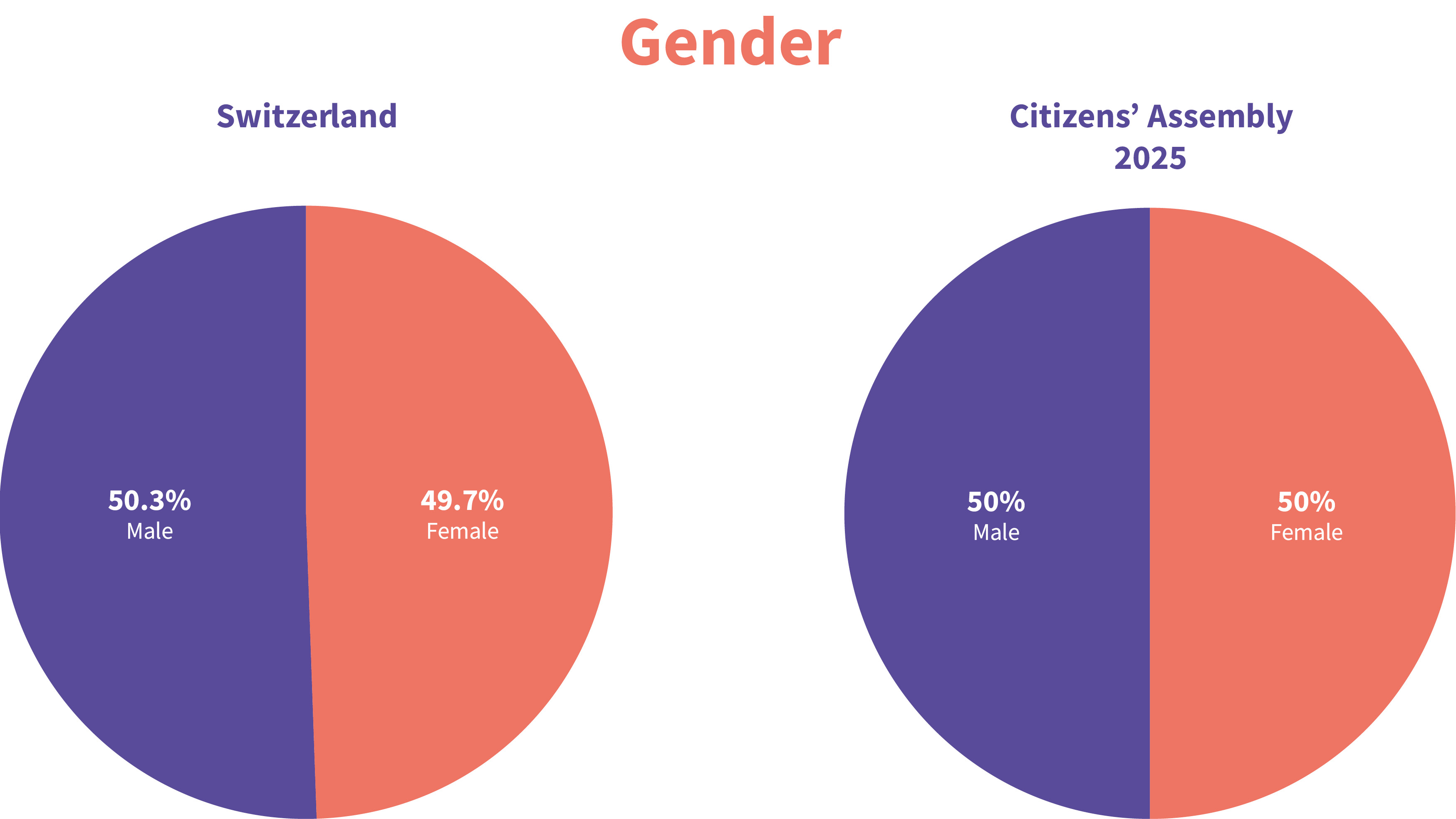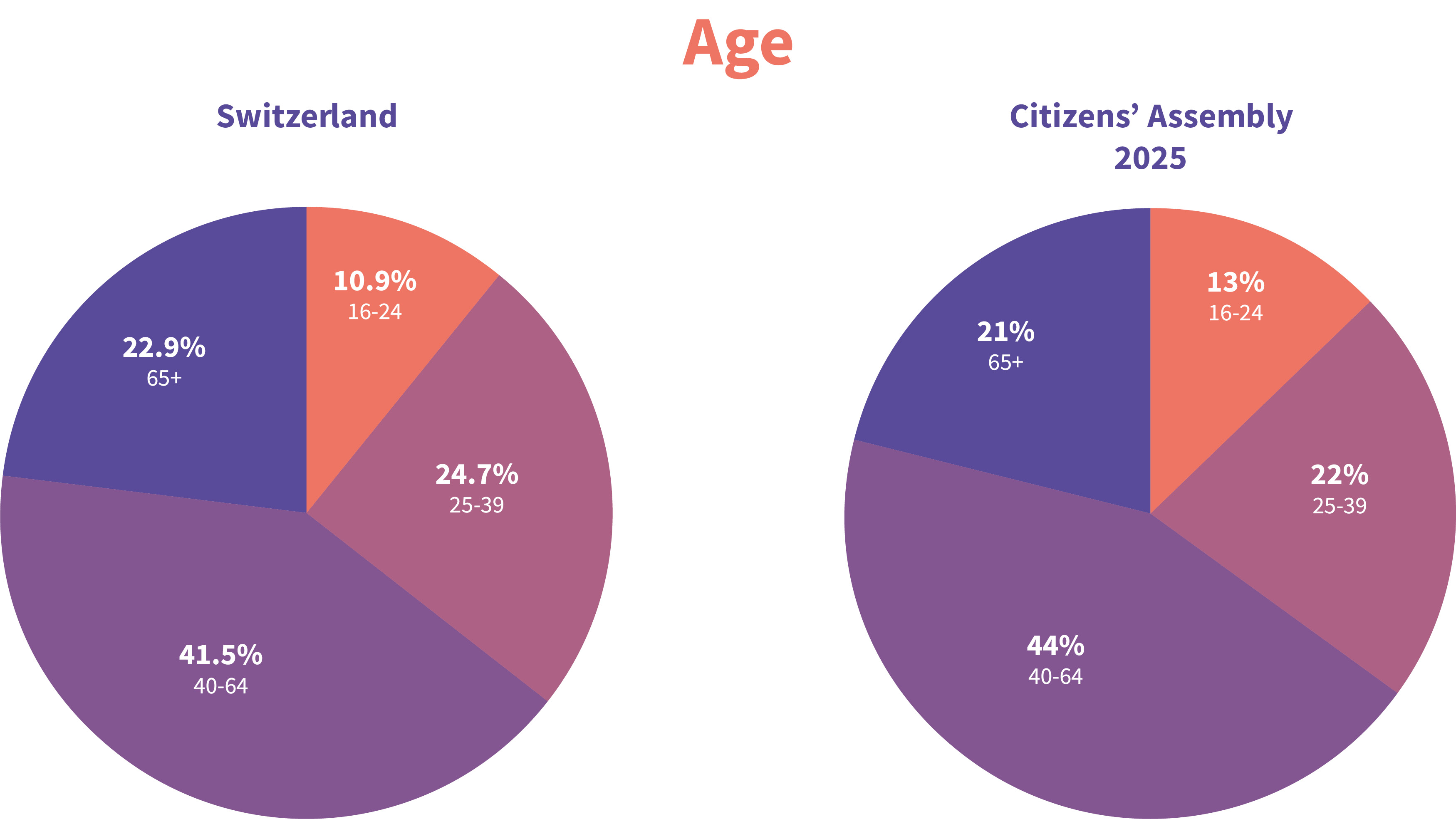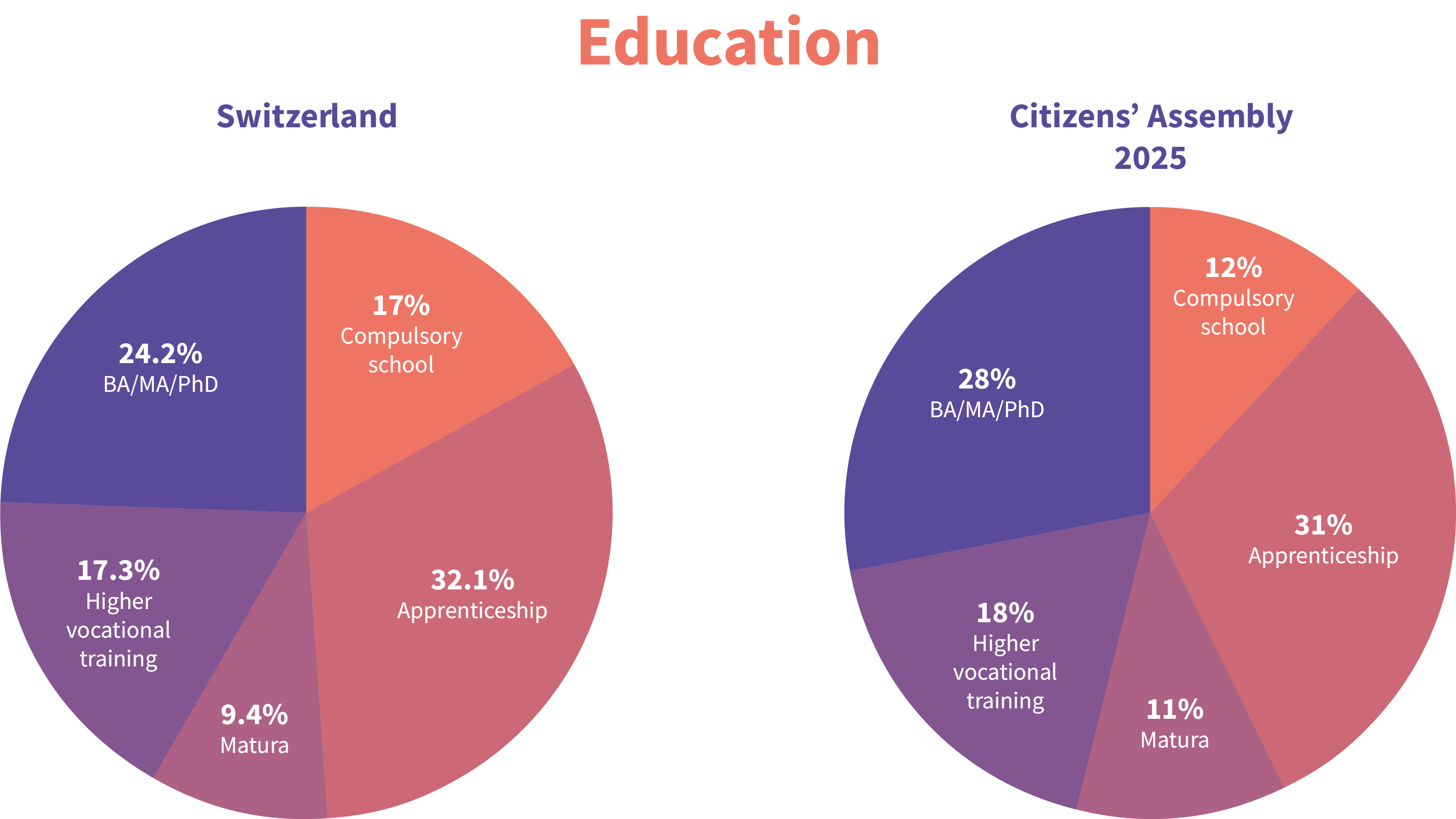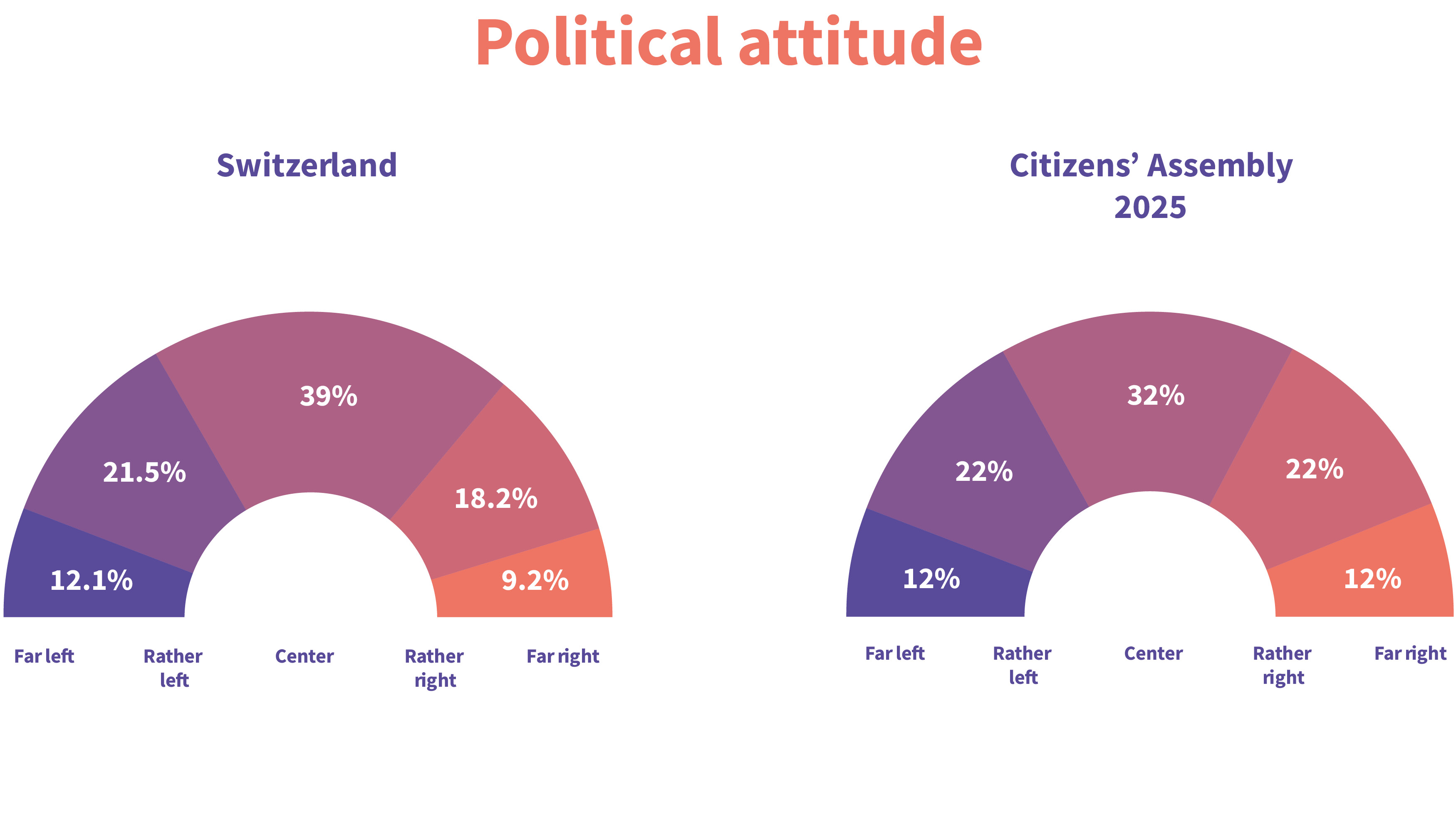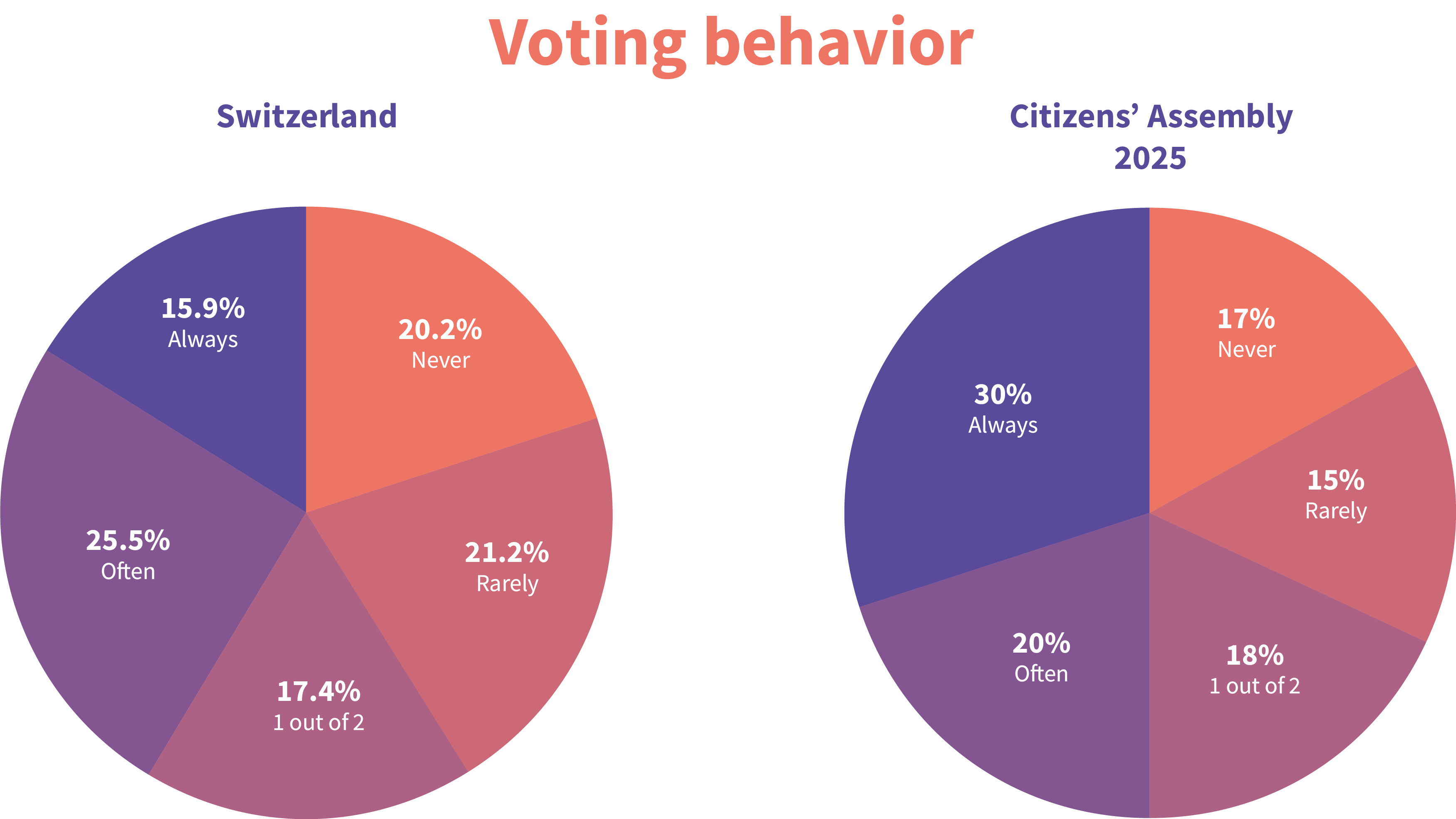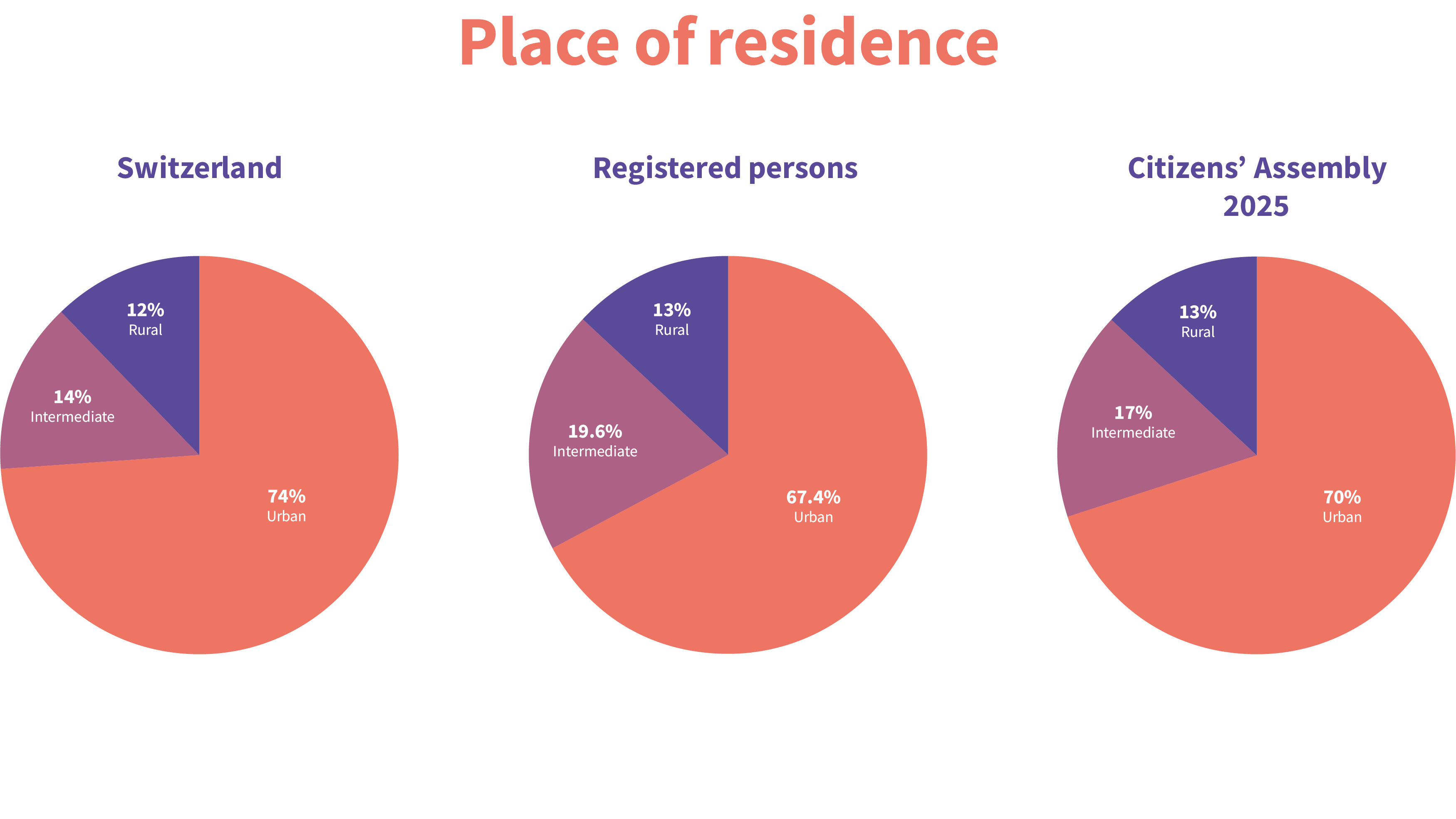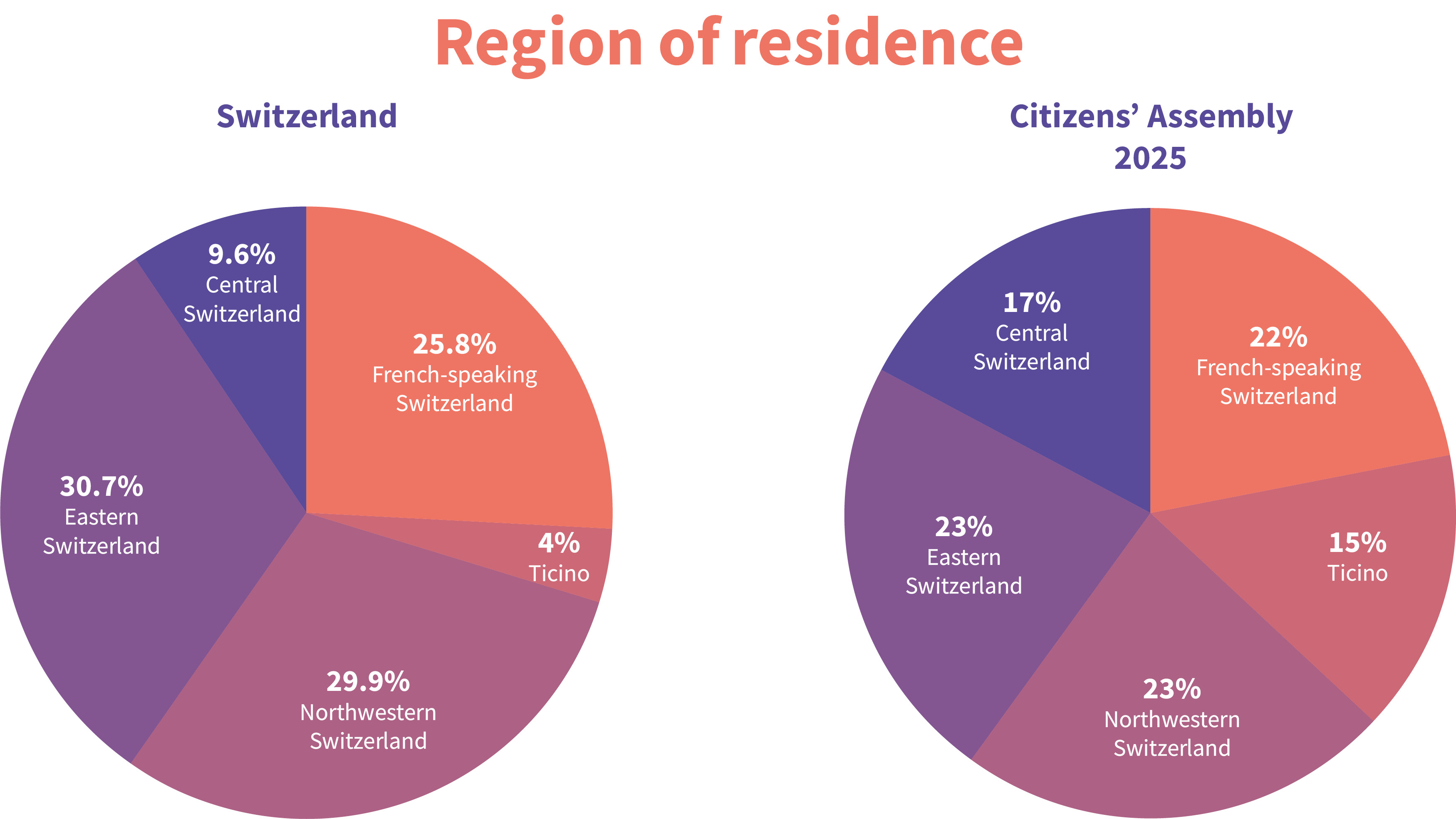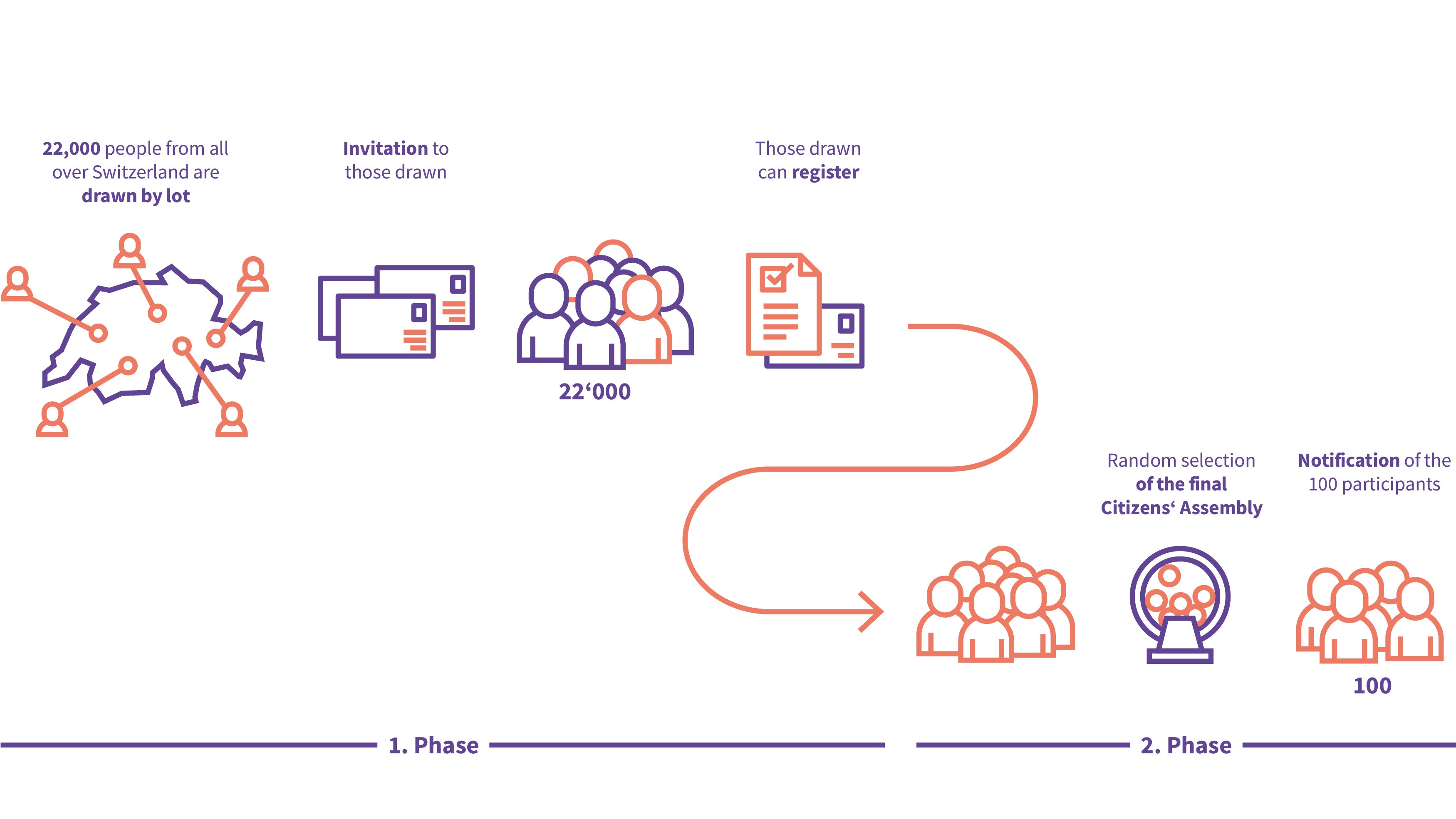Participants
The Citizens' Assembly aims to reflect the diversity of the Swiss population as well as possible and ensure that people with different opinions are included. To this end, the 100 participants in the Citizens' Assembly were randomly selected in a two-stage process.
Composition of the Citizens' Assembly 2025
The Citizens' Assembly should be as diverse as possible in terms of age, gender, education, political views, voting behavior, place of residence and region of residence. The following figures show the composition of the Citizens' Assembly 2025 compared to the Swiss resident population. Further information on the composition of the Citizens' Assembly can be found in the news article
A reflection of the Swiss population that is as diverse as possible.
Random selection
In a first step, around 22,000 people over the age of 16 and regardless of their nationality were drawn from the sample frame of the Federal Statistical Office. These people were invited to participate in the Citizens' Assembly by letter. Those interested in participating could register for the second random selection. To do so, they provided information about their age, education and political views. A total of 2,004 people registered to participate in the Citizens' Assembly.
On the basis of this information, 100 people were selected at random on June 25, 2024 at the Polit-Forum Bern to participate in the Citizens' Assembly. In a second step, the project team drew lots from all 2,004 responses at a media conference on 25 June at the Polit-Forum Bern to select 100 people who could take part in the Citizens' Assembly. Open source software from the SortitionFoundation was used for this purpose (how the software works is described in the scientific article in the journal Nature). The use of this software made it possible to select 100 people who are as diverse as possible in terms of age, gender, education and political views and who have different opinions and experiences.
